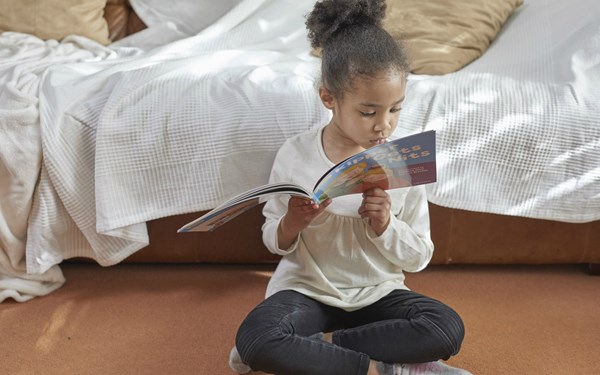If you’re looking to create a reading culture in and out of the classroom but struggling to give all your pupils access to the books they need, check out Reading Hub which is giving thousands of children and hundreds of Primary Schools access to a digital library in school and at home!
Reading culture is an environment where reading is celebrated, appreciated and respected. Reading is the bedrock of the curriculum and is paramount to a child’s personal, social, and academic success, as well as their general wellbeing.
What role does your library play in creating a reading culture?
Now children are back in school, we mustn’t overlook the importance of reading and the modest school library in closing the learning gap, reigniting children’s interest in learning, and, as importantly, alleviating teachers’ and school employees’ strain from heavy workloads.
“The role of a school library has never been more needed.”
– School Libraries Association
What role does the humble library play in Primary Schools?
School libraries have a vital role to play, throughout the learner journey from 3 to 18, in supporting literacy, health and wellbeing, and improving attainment.
In the early years, school libraries provide a welcoming and stimulating environment where children can explore books and other resources. They also offer opportunities for parents to get involved in their child’s learning. Research shows that parental engagement is key to improving learner attainment.

What are the functions of a school library in an era of austerity and a “digital divide”? Recent statistics show another year of public library cuts is on the cards. But what does this mean for our disadvantaged children and communities?
Currently, there’s no government requirement for schools to have a library. Yet, 1 in 11 children is growing up in the UK without books in the home. For these children, school is the only opportunity they will have to discover the magic of reading. Moreover, 25% of disadvantaged primary schools in England say they do not have a library. This is a devastating statistic for those communities as children that are eligible for FSM were more likely than their peers who are not eligible to use their school library daily.
How do you inspire a culture of reading in primary school libraries?
First and foremost, it’s vital to make your library a welcoming space.
Surrounding books with colourful reading cushions and beanbags that children can relax into while they read. Add rugs or carpets so the area is more inviting for younger learners who will be less likely to sit still on hard floors or unwelcoming furniture.
The way you build your library space is also vital:
- face books forward
- don’t overfill the shelves
- themed displays by authors and genres rather than abilities/Key Stages
- ensure it is multi-functional (break-out areas and quiet reading/working areas)
- plenty of non-fiction books for exploring
- engaging interactive displays
- use learner helpers
- ‘shelfie’ recommendations from other learners on books
- out with the old and in with the new (make sure every book is one that pupils will want to read)
- invite clubs to use the space for meetings
- offer themed events
- create a ‘book in every bag’ where all learners have a good book to read at home.
Having a well-stocked, bright, and exciting library with an abundance of books on offer will undoubtedly improve the reading culture within your school. But it’s not just about having books to read – librarians are essential in promoting and developing a love of reading. With their wealth of knowledge and passion for reading, they can help to ignite a lifelong love of reading within your learners.
Getting parents involved is also essential to inspiring a culture of reading. Schools can invite parents into the library to tell them all about their work and show off the amazing resources available for learners.

Reading for pleasure and having a well-resourced and functioning library are synonymous. More importantly, the success and well-being of all learners (especially the most vulnerable) rely on shelves to be well-stocked and for a quiet place to learn and explore. Books are a huge expense for schools, but you can’t put a price on improving the prospects of every child, can you?
Resources:
Clark, M., B. (2019). Can reading for pleasure in primary school improve attainment? A review of the evidence and policy context. Reading for Pleasure, London: National Literacy Trust. Retrieved from here.
Sullivan, N., & Brown, S.E. (2013). The Effect of Home
